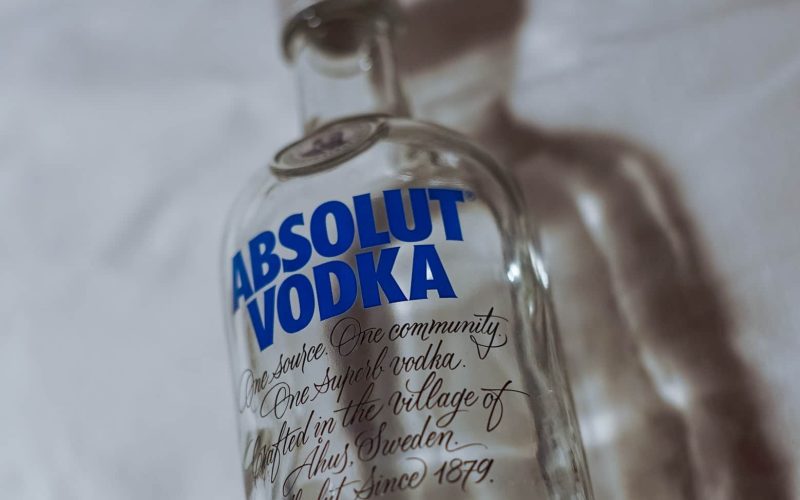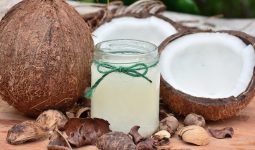There are many traditional Russian drinks, and this article focuses on some. Have you ever wondered what people drink in different countries?
Sure, there are some parallels between countries, but there are also many variances. Most countries have at least a few intriguing beverages unfamiliar to visitors from other countries.
This piece is about Russian cocktails, which are an outstanding example of this pattern. Although Russia is known for its vodka, it has many other popular beverages.
Names like Ryazhenka, kissel, and Kvass come to mind. Some of these beverages are alcoholic, while many others are non-alcoholic.
Russians have a drink for every circumstance: unwind or wake up, warm up or refresh, and drink alone or with others.
Here is a list of some of the traditional Russian drinks. Let’s go
1. Vodka
One of the most well-known traditional Russian drinks is vodka. It’s the drink that most people identify with within Russia, at least.
The name is considered a play on the Russian word for water, but this theory and the spirit’s origins are hotly debated.
The spirit is clear and consists primarily of ethanol and water. Certain vodkas, especially low-quality vodkas, contain trace contaminants, which can add a subtle flavor. If you want pure, flavorless vodka, look for high-quality vodka.
Flavored and flavored vodkas are also widely available. These have more intense tastes. However, you can consume them on their own or in a cocktail.
In Russia, vodka is still quite popular. This is mainly due to its low cost, making it highly profitable for bars and similar establishments.
Still, vodka isn’t the only popular alcoholic beverage in Russia or the only drink worth sampling. Also, Russia has far more to offer than a single well-known spirit. Other varieties of alcohol, as well as traditional non-alcoholic beverages, are consumed.
2. Kvass
One non-alcoholic example is kvass. It’s a fermented beverage produced from fermenting stale rye bread.
While that may not sound pleasant, kvass is quite tasty. The beverage is even known as Russian cola because the commercial version tastes very similar to a cola.
Kvass produced at home, on the other hand, is typically sourer. This is primarily because it has less sugar and chemicals. Unsurprisingly, homemade kvass and kvass from artisan producers are healthier than mass-produced equivalents.
Because kvass is a fermented beverage, it may contain some alcohol (usually less than 2.5%). This makes it taste like kombucha. Like kombucha, the alcohol concentration of kvass varies depending on how it’s created and how long it’s been sitting.
3. Russian Caravan
Russian Caravan’s tea mix is often created with Chinese oolong and black teas. The combinations vary, but they usually contain at least two tea kinds, with Keemun black tea, smoky Lapsang Souchong, and oolong teas being the most popular.
Furthermore, Russian Caravan is made with fully or partially oxidized teas, and the final flavor is often dark, smokey, spicy, and malty.
Traditionally, Chinese black teas were used in the mix, but Indian (Assam) or Taiwanese teas could be used instead because there are no specific components.
4. Sbiten
Sbiten is a traditional Russian, Ukrainian, and Belarussian beverage. It’s similar to mulled wine, combining red wine with honey, spices, and jam.
If you adopt this strategy, you’ll get a dark red or purple drink commonly served hot and called gluhwein. This is one of the traditional drinks you should try.
A non-alcoholic variant is also available, using water instead of red wine. Also, honey is the predominant flavor in this drink, making it an excellent choice for cold days and as a remedy.
5. Milk Kefir
Kefir is a popular fermented milk beverage that improves intestinal health. It is similar to drinkable yogurt, but it has a distinct sharp flavor and is somewhat carbonated. It may take some time to adjust to, but kefir, on the other hand, can be rather tasty.
While kefir is popular worldwide, it originated in Russia, notably in the Northern Caucasus. It was a closely guarded secret for a long time, but like most secrets, it ultimately leaked.
Kefir grains are widely available, allowing consumers to brew them at home. Kefir is still widely available in Russia and may be on supermarket shelves.
Furthermore, Look for kefir with a short shelf life, regardless of where you get it (no more than ten days). If the shelf life is prolonged, the kefir is most likely heavily processed or contains additives to extend its shelf life.
Probiotics should be more abundant in the versions with a limited shelf life. This is one of the best traditional Russian drinks.
6. Kompot
Kompot could be ideal if you prefer fruity drinks. This sweet, non-alcoholic fruit drink can be enjoyed at any temperature.
Kompot is a simple dish to make. To cook, combine various fruits with a significant amount of water and sugar.
Also, Peaches, apples, and strawberries are traditional fruits, but you can use any fruit you prefer. You could also include spices and dried fruit.
As you can see, there is a lot of space for diversity and adaptability. You can also choose whichever fruit and spice combo you like.
7. Kalmyk Tea
Kalmyk tea, or chai, is a thick, creamy tea made with crushed green or black tea and butter, milk, and salt.
Nutmeg and other spices, such as peppercorns, are sometimes used in the variants. This tea is manufactured primarily from pressed green stems, stalks, and twigs.
Kalmyk tea is named after the Kalmyk, a Mongolian nomadic people who live in Russia and Kyrgyzstan and make up most of the Russian region of Kalmykia.
Also, you will most likely start by making the tea with melted butter, salt, and camel milk. This is one of the most popular traditional Russian drinks.
8. Coffee Raf
Coffee Raf is a coffee-based drink developed in Moscow’s Coffee Bean. It is commonly made with a shot of espresso, cream, and plain or vanilla sugar.
Unlike other coffee kinds, the ingredients in coffee Raf are mixed and then steamed to create a creamy, uniform drink.
Furthermore, according to mythology, Coffee Raf was established in the 1990s for Rafael Timberbaev, a regular at the Coffee Bean shop who enjoyed his coffee with milk. Also, coffee was given its current name once it became popular.
9. Yorsh
Yorsh is a famous Russian mixed drink created with a beer and vodka mixture. Personal preferences may influence the ingredient proportions.
Because Yorsh is generally enjoyed in social settings following a toast, it is recommended that you sip the cocktail fast once the ingredients have been blended.
Although vodka does not significantly modify the flavor of beer, it substantially boosts the alcohol level of the cocktail, making it ideal for getting drunk quickly.
10. Vzvar
This drink resembles Kompot in appearance, which is not surprising given that the two drinks are created similarly. Both use boiling water, fruit, and a sweetener of some sort.
Because the fruit is crushed, vzvar is usually thicker than kompot. However, the difference is frequently insignificant.
Furthermore, the fundamental distinction between the two beverages is that vzvar contains aromatic herbs. Some versions include a splash of wine to make a warming cocktail.
11. Kissel
Kissel is an exception. It isn’t easy to decide whether to call it a drink, a dessert, or a soup. Fruit juice or mashed fruit, water, and a thickening agent are used to make it.
Kissel’s texture is different from that of typical fruit juice due to the thickening ingredient. The amount of thickening employed impacts the final surface. The drink is sometimes as thin as conventional fruit juice, and other times, it is thick enough to eat with a spoon.
Moreover, there are numerous different versions. The drink, for example, can be served hot or cold. You can also add fruit or red wine, substantially altering the flavor.
Instead of the conventional method, many countries now provide instant kissel mixtures. However, while the instant versions do not have the same flavor as the traditional versions, they are simpler to prepare.
12. Mors
Mors and Kompot are similar in that they both rely on fruit. While Kompot employs a variety of fruits, such as apples and peaches, Mors focuses solely on berries.
We’re not simply talking about strawberries, raspberries, or blueberries. Other berries, such as redcurrants, blackcurrants, and cranberries, can also be included in the drink.
You can make the drink in various ways. One method is to boil fresh berries in water, drain the liquid, and then sweeten it with sugar. Alternatively, you can crush the berries and combine them with hot water and sugar.
This drink may be served hot or cold, making it suitable for every season. It is undoubtedly one of the different types of traditional Russian drinks.
13. Ryazhenka
For starters, the beverage is a form of fermented milk. This makes it comparable to kefir. However, ryazhenka is made from cow’s milk and soured with lactic acid, unlike kefir.
We’re also not talking about ordinary cow’s milk. Ryazhenka is made using baked milk. Its texture and color distinguish it from other fermented milk products.
One of the best reasons to sample ryazhenka is the flavor. The drink’s caramel flavor comes from baking the milk. There’s no need to add sweetener because the fruit is naturally sweet.
The health benefits are similar to those of kefir. As a result, the drink has plenty of probiotics and minerals found in dairy milk, including calcium.
14. Medovukha
Even though it isn’t as popular today, Medovukha has a long history in Russia. Because it is made from fermented honey, it is comparable to mead. It’s not extremely strong, with an ABV typically between 5% and 10%.
The primary ingredients are water, sugar, honey, and yeast. Of course, the recipe can be altered in many ways, such as adding herbs or fruits for added flavor.
Furthermore, Medovukha, like mead, is less popular than modern alcoholic beverages like beer, wine, and spirits. Also, there has been a modern rebirth of interest, and medovukha merchants may be found in Russia.
15. Starka
Starka is a type of alcoholic beverage made from rye spirit. It is usually connected with Poland, Lithuania, and Russia and dates back to the 15th century.
Its origins are linked mainly to Polish noble families who would bury and age a distillate in wooden barrels to mark a child’s birth.
Furthermore, Starka was only drunk on rare occasions, most notably on a child’s wedding day. The best forms of this historic drink are still aged in oak barrels, and most types are now produced from rye distillate and several secret additives.
16. Samogon
Samogon, or Russian moonshine, is a strong drink with various components. The most popular essential ingredients include wheat, corn, beets, sugar, potatoes, bread, and fruits. This centuries-old beverage’s name approximately translates to “self-distilled.”
Although the exact date when samogon appeared initially is unknown, it is thought to have preceded the all-time favorite Russian vodka.
Samogon has long been a popular drink among Russia’s lower socioeconomic levels and rural locations.
Beginning with Ivan the Terrible’s reign, any non-state-produced liquor was forbidden, and vodka and wine were primarily promoted as viable alternatives. This is one of the best traditional Russian drinks.
17. Prostokvasha
Prostokvasha is a sour milk beverage similar to kefir and ryazhenka. Also, Prostokvasha is thicker than kefir and lacks the same noticeable sourness.
Another probiotic option, the drink is an excellent method for improving your gut bacteria. It’s also simple to consume, and the lack of sourness makes it a great probiotic for beginners.
18. Birch Juice
Birch juice is known as beryozovy sok and requires no explanation. The sap from the birch tree is all it is. The fluid has a viscosity similar to water and a mildly sweet flavor.
Birch was considered a sacred tree in Slavic history, making it a unique drink. Although birch juice is still consumed regularly, this is no longer true. You can even pick it up on your own. The trick is to be cautious so as not to harm the tree.
The juice’s availability has risen and fallen throughout time. It became increasingly difficult to locate after the Chornobyl tragedy at the end of the 1980s.
Since then, availability has expanded, partially because the drink has become popular among bodybuilders and partly because it is viewed as a symbol of Russia.








